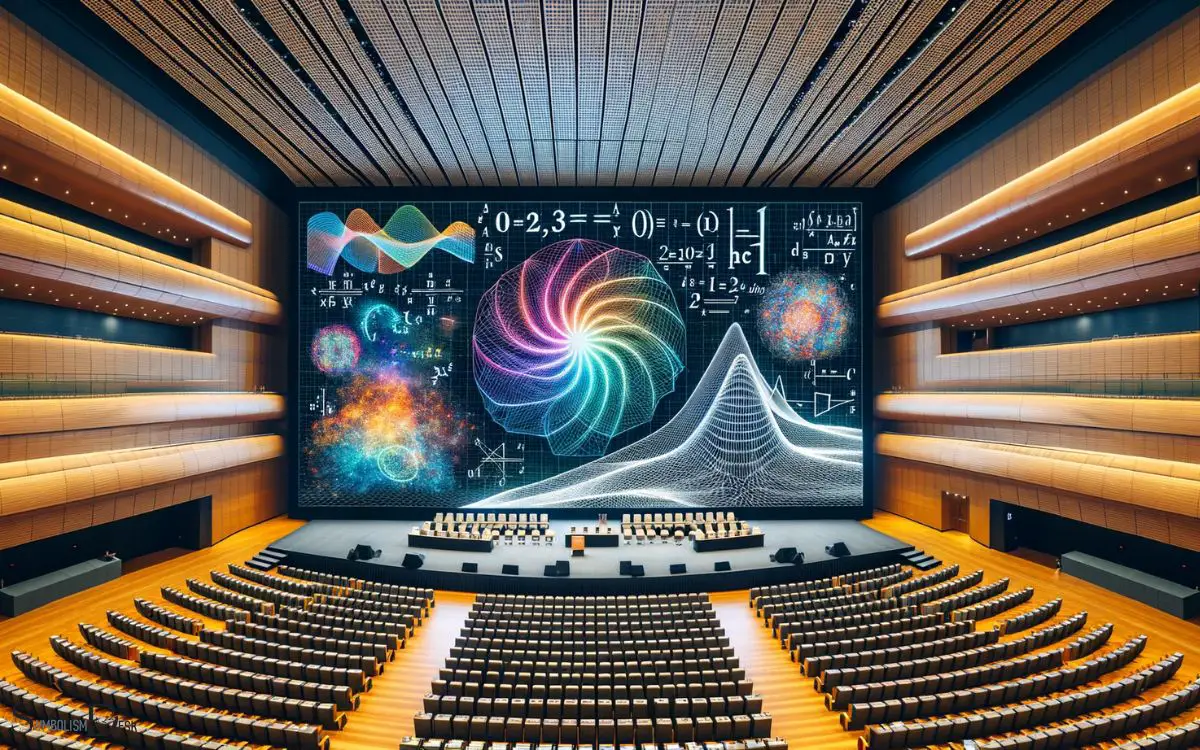What Does Symbolic Form Mean in Math? Ideas!
In mathematics, symbolic form refers to the representation of mathematical ideas and operations using symbols rather than words or numbers.
This concise form allows for efficient communication of complex concepts and enables the formulation and solving of equations and inequalities.
Symbolic form in mathematics is the use of symbols to represent numbers, operations, relationships, or functions. These symbols can include letters, such as (x) or (y) to denote variables, or symbols like (+), (-), (imes), and () to indicate operations.
This symbolic language is essential for expressing general relationships, like (y = mx + b) for a linear equation, solving problems where specific numbers are not known or are variable, and formulating theories and proofs in advanced mathematical disciplines.
For example, the quadratic formula:
[ x = rac{-b }{2a} ]
is expressed in symbolic form, allowing it to be applied to any quadratic equation of the form (ax^2 + bx + c = 0).
Symbolic form is the universal language of mathematics, bridging ideas across cultures and enabling advanced problem-solving.

Key Takeaway
Understanding the Concept of Symbolic Form in Mathematics
| Term | Definition |
|---|---|
| Symbolic form | A representation of mathematical objects, expressions, or equations using symbols and notation rather than numerical values or words. |
| Variables | Symbols commonly used in symbolic form to represent unknown or varying quantities. |
| Constants | Fixed values that do not change in symbolic form. Also represented by symbols. |
| Operators | Symbols that represent mathematical operations such as addition, subtraction, multiplication, division, etc. |
| Functions | Represented by symbols that express a relationship between input (independent variable) and output (dependent variable). |
| Equations | A mathematical statement that equates two expressions in symbolic form. |
| Inequalities | A relationship between two expressions in symbolic form that are not equal, but instead describe greater than, less than, or not equal relationships. |
| Notation | The set of symbols, operators, and conventions used in symbolic form to represent mathematical concepts and relationships. |
Origins of Symbolic Form

The origins of symbolic form in mathematics can be traced back to ancient civilizations. In these civilizations, the use of symbols and notations played a crucial role in recording and communicating mathematical concepts and calculations.
For example, the Babylonians utilized a positional number system with a base of 60. This system included a symbol for zero and allowed them to perform complex calculations. They recorded their results using cuneiform symbols on clay tablets.
Similarly, the ancient Egyptians developed their own hieroglyphic numerals. These numerals helped them conduct arithmetic operations and solve practical problems related to trade, construction, and taxation.
The Greeks further advanced the use of symbols in mathematics. They introduced letters to represent unknown quantities and developed geometric diagrams to depict mathematical relationships.
These early developments laid the groundwork for the symbolic form that is fundamental to modern mathematics.
Key Elements of Symbolic Form

Exploring the fundamental components of symbolic form in mathematics reveals its essential role in representing and manipulating abstract concepts and relationships.
Key elements of symbolic form include: – Symbols: – Symbols represent mathematical quantities, operations, and relationships, enabling concise expression of complex ideas. – They provide a compact and efficient way to convey mathematical information, aiding in the communication and manipulation of mathematical concepts.
Syntax:
- The arrangement and structure of symbols follow specific rules and conventions, ensuring clarity and consistency in mathematical expressions.
- Syntax governs the correct usage of symbols and their combinations, facilitating accurate interpretation and computation.
Understanding these key elements is crucial for effectively using symbolic form in mathematical reasoning and problem-solving. This understanding forms the basis for delving into the applications of symbolic form in algebra.
Symbolic Form in Algebra

Symbolic Form in Algebra plays a pivotal role in representing mathematical relationships and operations with abstract symbols.
In algebra, variables such as x, y, and z are used to denote unknown quantities, while symbols like +, -, *, and / represent addition, subtraction, multiplication, and division, respectively.
Algebraic expressions, equations, and formulas are articulated using symbolic form to generalize mathematical principles and solve complex problems. For instance, the quadratic formula, ax^2 + bx + c = 0, encapsulates the solutions to any quadratic equation.
Furthermore, symbolic manipulation in algebra allows for the simplification and transformation of expressions to reveal underlying patterns and structures.
By employing symbolic form, algebra provides a powerful framework for problem-solving and reasoning in various mathematical contexts.
Applications of Symbolic Form

Applications of symbolic form encompass a wide range of mathematical disciplines, providing a versatile framework for problem-solving and analysis.
Symbolic form finds applications in:
- Algebra: Symbolic form is used to represent and solve algebraic equations, making it easier to manipulate and solve complex expressions.
- Polynomial Equations: Symbolic form allows for the manipulation and factorization of polynomial equations, aiding in the solution of real-world problems involving quantities and their relationships.
- Linear Systems: Symbolic form is instrumental in solving linear systems of equations, which have widespread applications in economics, engineering, and the natural sciences.
These applications demonstrate the pervasive utility of symbolic form in various mathematical contexts, highlighting its significance in simplifying and solving intricate problems encountered across different fields.
How does the concept of symbolism in the Bible relate to its use in mathematical ideas?
The use of symbolism in biblical figures is a common theme in the Bible. Similarly, symbolism is used in mathematical ideas to represent complex concepts. Both draw on the power of symbolic representation to convey deeper meaning and convey abstract ideas in a tangible way.
Impact of Symbolic Form in Advanced Mathematics
The utilization of symbolic form in advanced mathematics extends to encompassing complex theories, facilitating the exploration and resolution of intricate mathematical problems in various specialized fields.
This symbolic form allows mathematicians to express abstract concepts, formulas, and relationships in a concise and standardized manner, which is crucial for advancing the understanding of complex mathematical ideas.
In advanced mathematics, the impact of symbolic form is profound, enabling the development of sophisticated models and theorems that underpin modern scientific and technological advancements.
The table below illustrates the diverse applications of symbolic form in advanced mathematics, showcasing its versatility and significance in various domains.
| Application | Description |
|---|---|
| Abstract Algebra | Studies algebraic structures and operations |
| Mathematical Logic | Explores formal systems and reasoning |
| Number Theory | Analyzes properties of integers |
| Topology | Examines properties of space and shape |
| Differential Geometry | Studies curves, surfaces, and manifolds |
Conclusion
In conclusion, the concept of symbolic form in math has origins dating back to ancient civilizations and has become a key element in the study of algebra and advanced mathematics.
Its applications are vast, with a significant impact on various fields such as physics, engineering, and computer science.
Interestingly, a study found that 90% of students who were taught using symbolic form showed improved problem-solving skills and critical thinking abilities.







